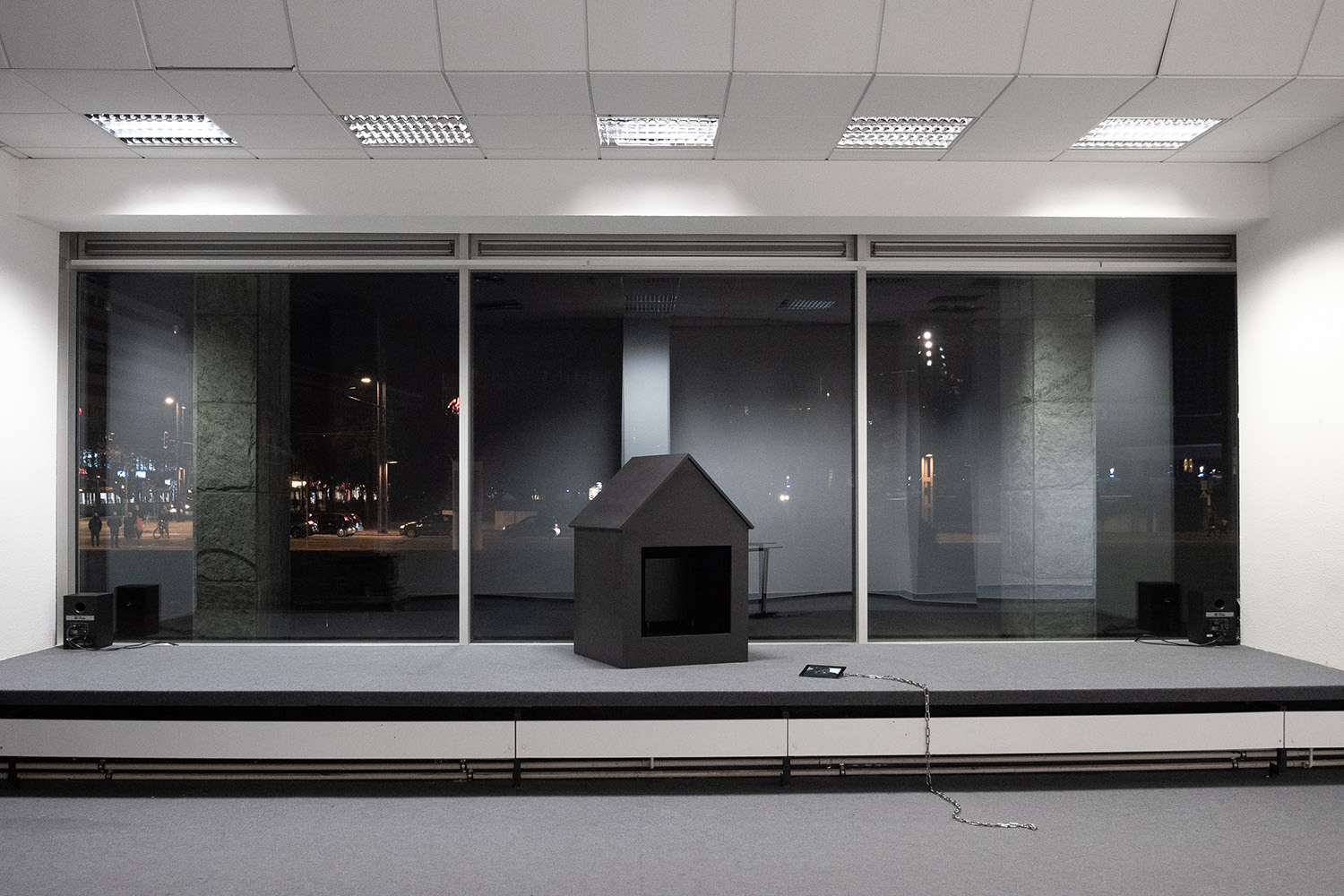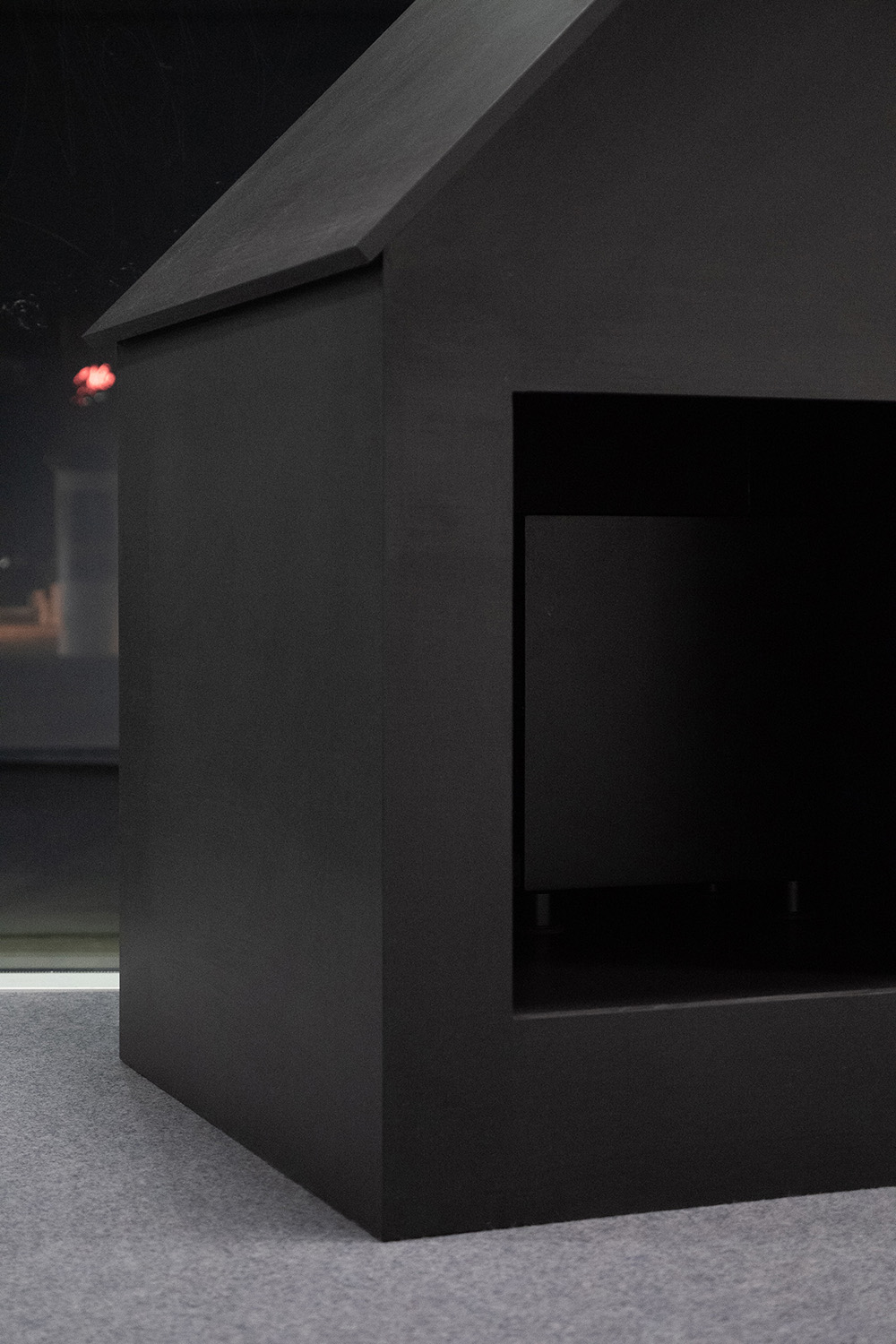
Dem Menschentier is site-specific and was initially directed at the intersection between Straße der Nationen (Street of the Nations) and Brückenstraße, behind the Karl-Marx Monument in Chemnitz.
At this intersection in August 2018, protests involving thousands of people led to violence against police, counter-demonstrators, and BIPoC*, as far-right civilians and politicians instrumentalized the murder of Daniel H. The images, and their political and social consequences, remain.
The title refers to Hélène Cixous’s autobiographical essay ›Stigmata, or Job the Dog‹¹. In this text, her dog, Job, becomes a sign of difference and alterity, revealing the entanglement between human and animal. Through her dog, Cixous describes the effects of boundaries, created by nation-states, colonization, race, class, and religion.
Positioned next to the object are speakers directed towards the site. They are playing a beat of 40 BPM and a solfeggio frequency of 396 Hz. The human body adjusts to 40 heartbeats per minute during sleep, calm and vulnerable and 396 Hz is said to heal fears and sorrow. A 25 Hz sinus frequency pulses inside the house on a subwoofer – supposedly able to cure anxiety caused by images.
[1] Cixous, Hélène: Stigmata, or Job the Dog. In: Stigmata, New York: Routledge. 2005. 149-158.


Dem Menschentier, 2019
black dyed MDF, stainless steel chain, video 1’20“ [quotes by Hélène Cixous], sound [25 Hz I 396 Hz I 40 BPM]